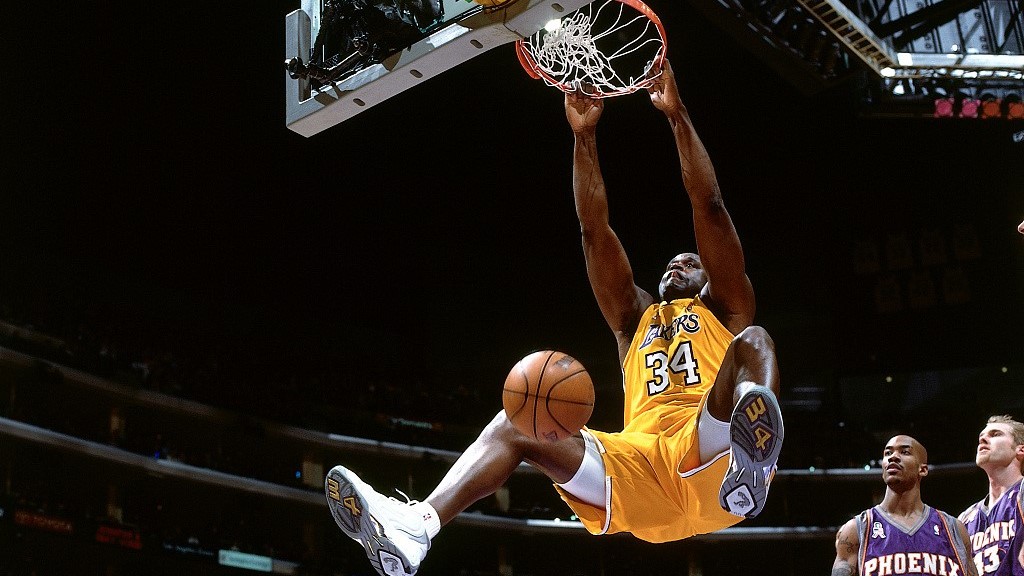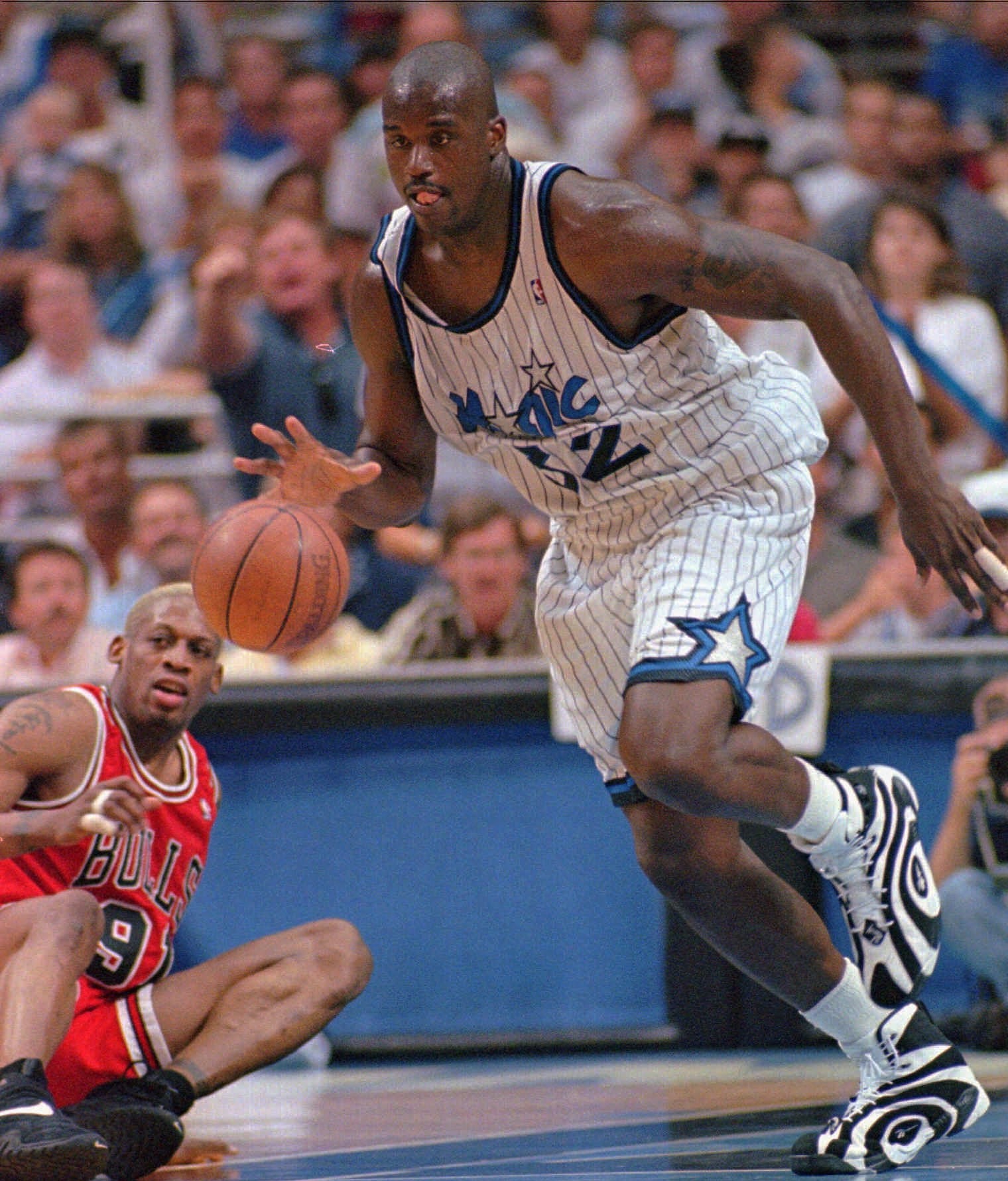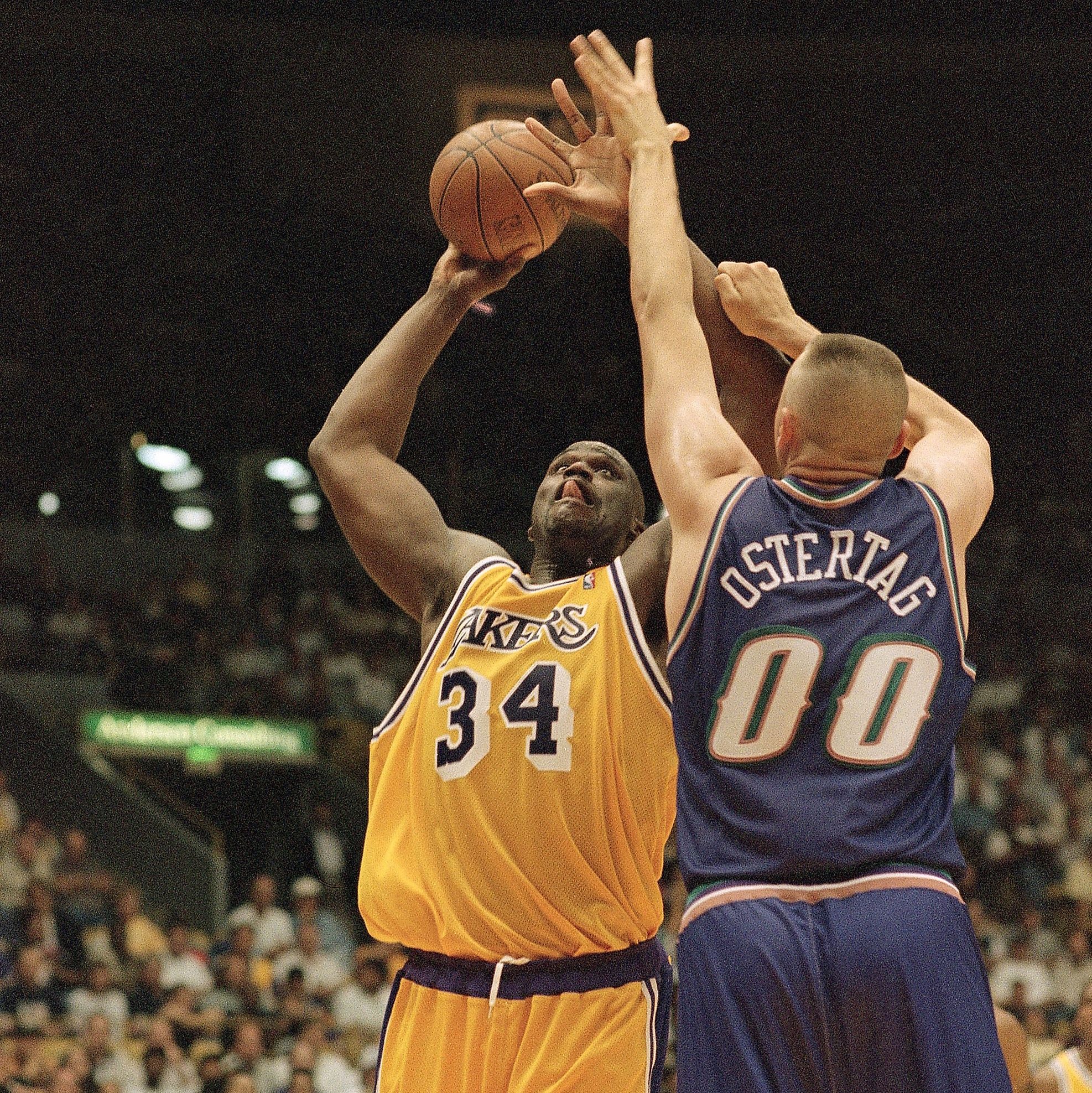
Shaquille O'Neal #34 of the Los Angeles Lakers dunks in the game against the Phoenix Suns at the Staples Center in Los Angeles, California, 2004. /VCG
Shaquille O'Neal #34 of the Los Angeles Lakers dunks in the game against the Phoenix Suns at the Staples Center in Los Angeles, California, 2004. /VCG
When the Los Angeles Lakers knocked out the Seattle SuperSonics 4-1 in the Western Conference semifinals in 1998, 26-year-old Shaquille O'Neal averaged 30.6 points, 9.6 rebounds, 4.0 assists and 4.0 blocks with a field goal rate of 63 percent in five games.
Back then, Gary Payton was still in his prime and Seattle had already eliminated Hakeem Olajuwon and his Houston Rockets four times in the playoffs. Thanks to the opponents' forward trapping and fast switch, Olajuwon was only able to get 18.3 points per game in 1996.
However, O'Neal crushed Seattle's defense into pieces. Seattle's forwards – Detlef Schrempf, Vin Baker, Sam Perkins – were tall and fast, but none of them was strong enough to even slow O'Neal down before teammates joined to trap him. Seattle's head coach George Karl argued that O'Neal might have already surpassed Michael Jordan in his game dominance.

Shaquille O'Neal #32 of the Orlando Magic dribbles the ball in Game 4 of the Eastern Conference Finals against the Chicago Bulls at the Orlando Arena in Orlando, Florida, May 27, 1996. /AP
Shaquille O'Neal #32 of the Orlando Magic dribbles the ball in Game 4 of the Eastern Conference Finals against the Chicago Bulls at the Orlando Arena in Orlando, Florida, May 27, 1996. /AP
O'Neal is more than brute strength
Many remembered O'Neal's game as simply receiving the ball, pushing his way into the paint and then finishing with a highlight dunk while carrying one or two defenders on his shoulders, but that's not true. In fact, even with O'Neal's physical condition, playing like that would have killed him.
When O'Neal joined the league in 1992, he was not as big as he became in the 2000s. Of course he had a power advantage over most centers in the league, but what really made him so unstoppable was his athleticism. During his time with the Orlando Magic, it was routine performance for O'Neal to conduct solo fast break dunks like Giannis Antetokounmpo does today.

Shaquille O'Neal (R) shoots the ball in the NBA playoff game against the Portland Trail Blazers at the Great Western Forum in Inglewood, California, April 28, 1998. /AP
Shaquille O'Neal (R) shoots the ball in the NBA playoff game against the Portland Trail Blazers at the Great Western Forum in Inglewood, California, April 28, 1998. /AP
In his second year in the Lakers, 2.16-meter-tall, 150+kilogram O'Neal averaged 28.3 points, 11.4 rebounds. The purple and gold could only bury six points per game that season but the team's offensive rating was 111 points. By contrast, the Rockets in the 2017-18 season could make 15 3-pointers per game and their offensive rating was just 115 points, not to mention how difficult it was to score under the 1990s NBA rules.
In fact, many have underestimated O'Neal's skills too. When he won his first NBA championship in 2000, O'Neal admitted that he no longer had the athleticism in his younger age and had to rely more on skills. Pete Newell who has trained hundreds of giants, also in 2002 praised O'Neal's fundamentals like his footwork and hook shot.
What O'Neal really lacked was shooting range. He had various ways of putting the ball into the basket under the rim. However, once he was out of the paint, all his shootings were simply too flat, including his free throw attempts. Moreover, it must be revealed that O'Neal's poor free throw shooting had nothing to do with laziness. He fell off the tree and broke his right wrist when he was a child and that injury affected his shooting for his entire career.

Greg Ostertag #00 of the Utah Jazz defends Shaquille O'Neal of the Los Angeles Lakers in Game 4 of the Western Conference Finals at the Great Western Forum, May 24, 1998. /AP
Greg Ostertag #00 of the Utah Jazz defends Shaquille O'Neal of the Los Angeles Lakers in Game 4 of the Western Conference Finals at the Great Western Forum, May 24, 1998. /AP
Of course O'Neal is not perfect
O'Neal could pass, that's for sure, at least after he joined the Lakers. With his size, vision and offensive threat, it wasn't hard for him to find open teammates outside. Nonetheless, his power and weight determined that O'Neal was not as agile as Olajuwon or David Robinson.
That meant trapping could still work on him, but it required smart implementation. In both 1996 and 1998, O'Neal's teams were swept by the Chicago Bulls and the Utah Jazz 40 in the playoffs. The two teams used the same tactics. Let's take Utah's case for an example.
First, a giant who could match O'Neal in size – like Greg Ostertag – would push O'Neal out of the paint before he could receive the ball. When O'Neal got the ball and began to drive towards the rim, John Stockton, the NBA's steals leader (3,265) would come to double team because it was already too late for O'Neal to pass the ball.

L-R: John Stockton, Greg Ostertag and Karl Malone of the Utah Jazz. /VCG
L-R: John Stockton, Greg Ostertag and Karl Malone of the Utah Jazz. /VCG
As a result, though O'Neal averaged 31.8 points per game, he also committed 14 turnovers. Furthermore, the Lakers' offense fell apart, only scoring 90.5 points per game and did not reached 100 in any of the games.
That's why Phil Jackson had to give Kobe Bryant more liberty and a bigger role on offense, despite the fact that it made O'Neal unhappy. The team needed sharp penetration from the weak side. Meanwhile, old but cunning guards like Roy Harper were also necessary because they knew how to move the ball faster and smarter. All these were part of the solution to the trapping defense against O'Neal.